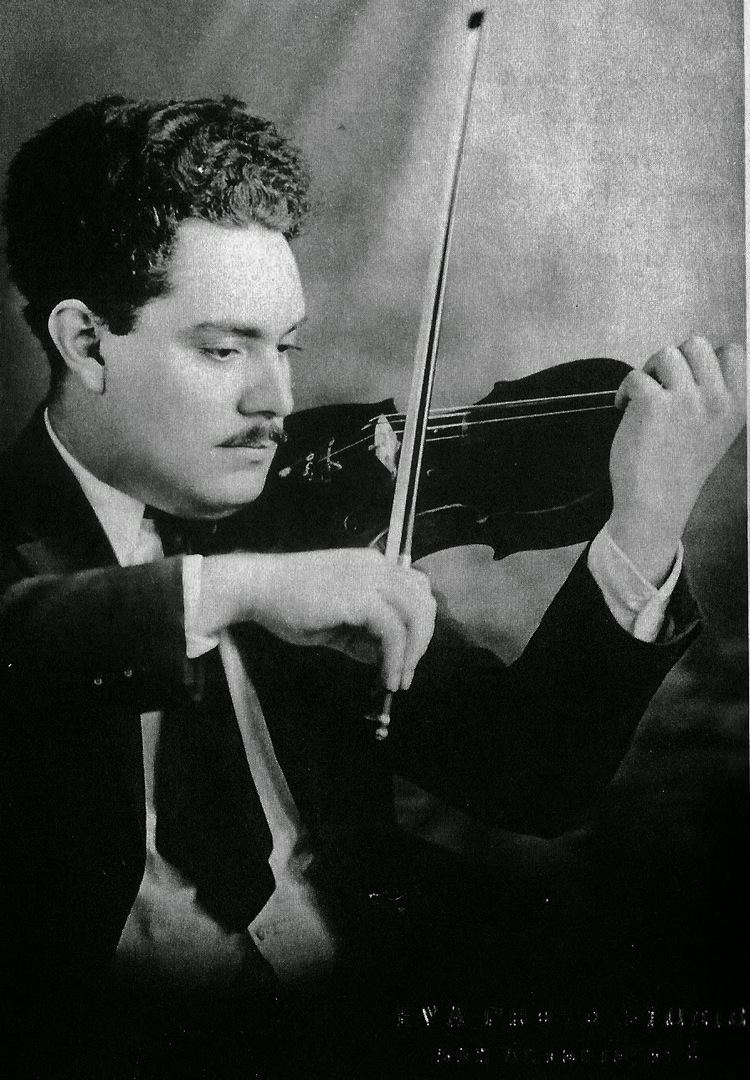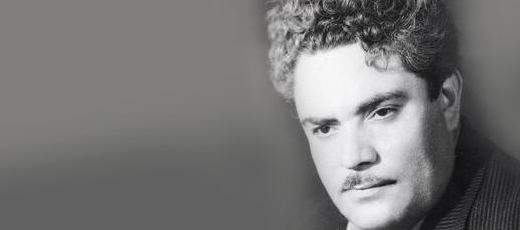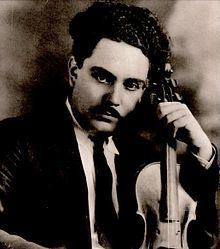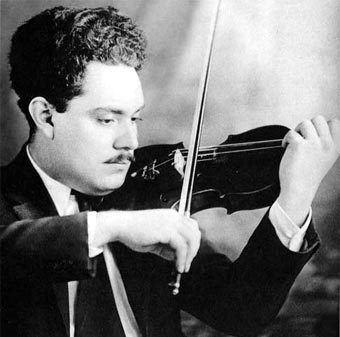Name Silvestre Revueltas | Role Composer | |
 | ||
Children Eugenia Revueltas Sanchez, Carmen Peers Siblings Jose Revueltas, Fermin Revueltas Sanchez, Rosaura Revueltas, Consuelo Revueltas Sanchez Parents Romana Sanchez Arias, Gregorio Revueltas Gutierrez Similar People Carlos Chavez, Jose Pablo Moncayo, Jose Revueltas, Fermin Revueltas Sanchez, Rosaura Revueltas | ||
Mexico graciela iturbide silvestre revueltas
Silvestre Revueltas Sánchez (December 31, 1899 – October 5, 1940) was a Mexican composer of classical music, a violinist and a conductor.
Contents
- Mexico graciela iturbide silvestre revueltas
- Silvestre Revueltas Sensemay 1937 Bernstein
- Life
- Works
- Chamber works
- Orchestral works
- Ballets
- Film scores
- Songs
- Piano
- References

Silvestre Revueltas - Sensemayá (1937) {Bernstein}
Life

Revueltas was born in Santiago Papasquiaro in Durango, and studied at the National Conservatory in Mexico City, St. Edward's University in Austin, Texas, and the Chicago College of Music. He gave violin recitals and in 1929 was invited by Carlos Chávez to become assistant conductor of the National Symphony Orchestra of Mexico, a post he held until 1935. He and Chávez did much to promote contemporary Mexican music. It was around this time that Revueltas began to compose in earnest. He began his first film score, Redes, in 1934, a commission which resulted in Revueltas and Chávez falling out. Chávez had originally expected to write the score, but political changes led to him losing his job in the Ministry of Education, which was behind the film project. Revueltas left Chávez' orchestra in 1935 to be the principal conductor of a newly created and short-lived rival orchestra, the Orquesta Sinfónica Nacional.

He was part of a family of artists, a number of whom were also famous and recognized in Mexico: his brother Fermín (1901–1935) and sister Consuelo (born before 1908, died before 1999) were painters, sister Rosaura (ca. 1909–1996) was an actress and dancer, and younger brother José Revueltas (1914–1976) was a noted writer. His daughter from his first marriage to Jules Klarecy (née Hlavacek), Romano Carmen (later Montoya and Peers), enjoyed a successful career as a dancer, taught ballet and flamenco in New York, and died on November 13, 1995, at age 73, in Athens, Greece. She is survived by three sons, and two kindred creative female heirs in Oceanside, California. His daughter from his second marriage, Eugenia (born November 15, 1934), is an essayist. His nephew Román Revueltas Retes, son of José, is a violinist, journalist, painter and conductor of the Orquesta Sinfónica de Aguascalientes (OSA).
In 1937 Revueltas went to Spain during the Spanish Civil War, as part of a tour organized by the leftist organization Liga de Escritores y Artistas Revolucionarios (LEAR); upon Francisco Franco's victory, he returned to Mexico. He earned little, and fell into poverty and alcoholism. He died in Mexico City of pneumonia (complicated by alcoholism), at the age of 40 on October 5, 1940, the day his ballet El renacuajo paseador, written four years earlier, was premièred. His remains are kept at the Rotonda de los Hombres Ilustres in Mexico City.
Works
Revueltas wrote film music, chamber music, songs, and a number of other works. His best-known work is a suite by José Ives Limantour drawn from his film score for La Noche de los Mayas, although some dissenting opinions hold that the orchestral work Sensemayá is better known. In any case, it is Sensemayá that is considered Revueltas's masterpiece.
He appeared briefly as a bar piano player in the movie ¡Vámonos con Pancho Villa! (Let's Go With Pancho Villa, Mexico, 1935), for which he composed the music. When shooting breaks out in the bar while he is playing "La Cucaracha", he holds up a sign reading "Se suplica no tirarle al pianista" ("Please don't shoot at the piano player").
